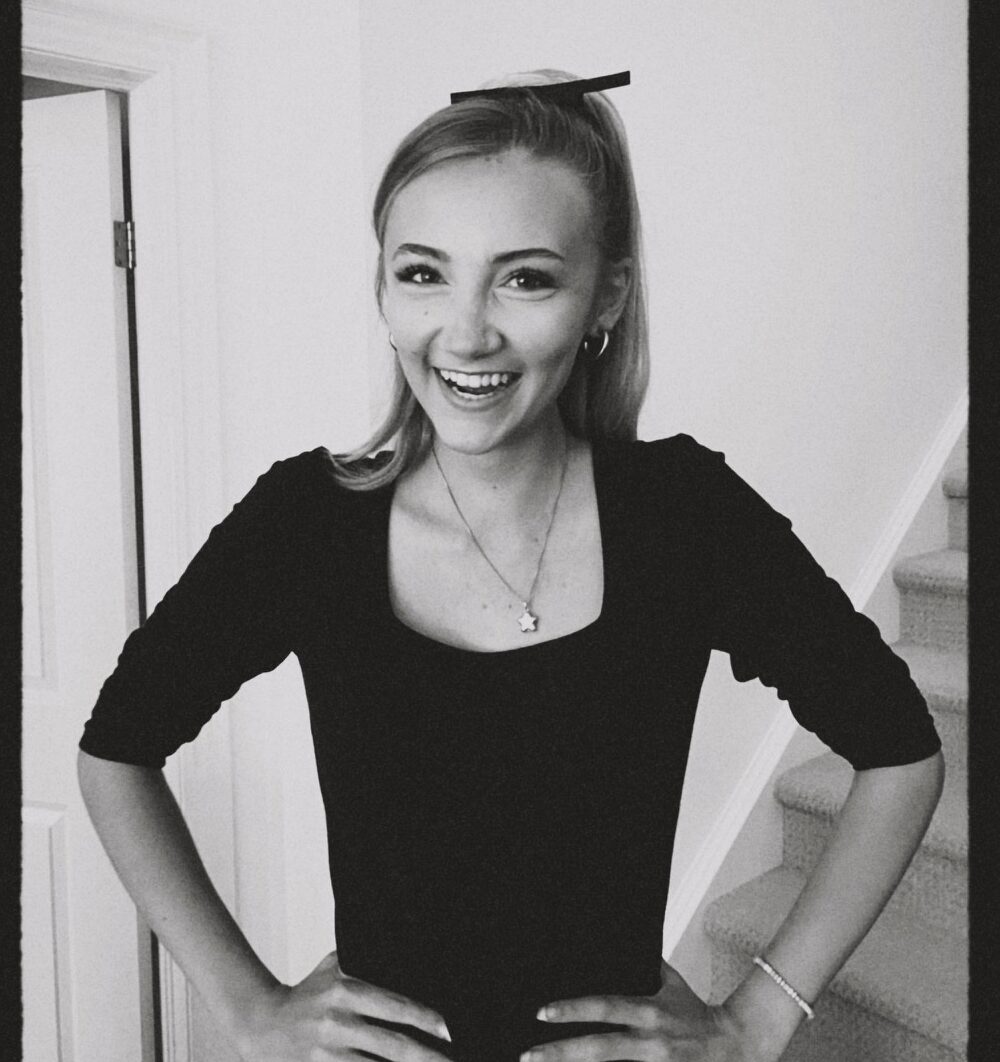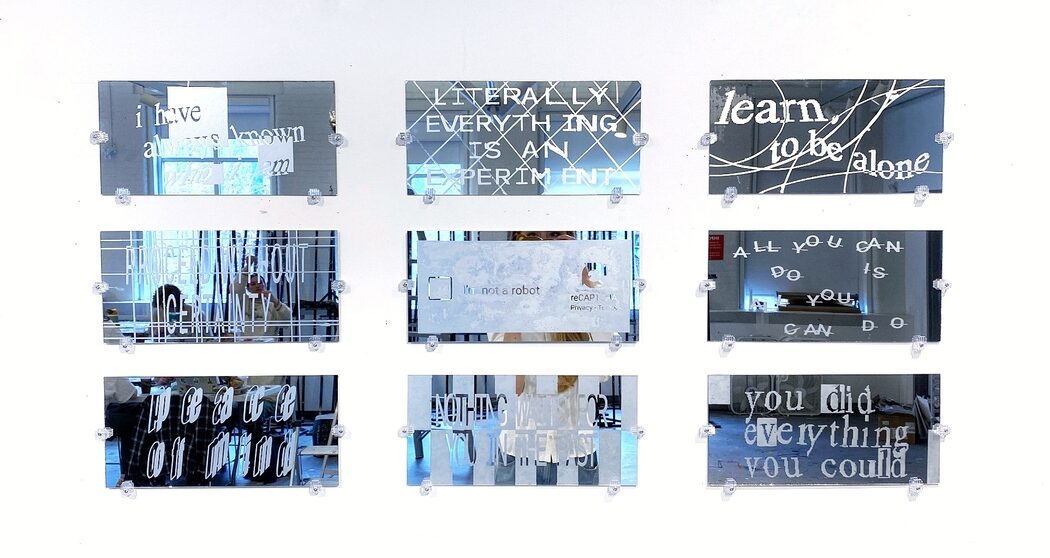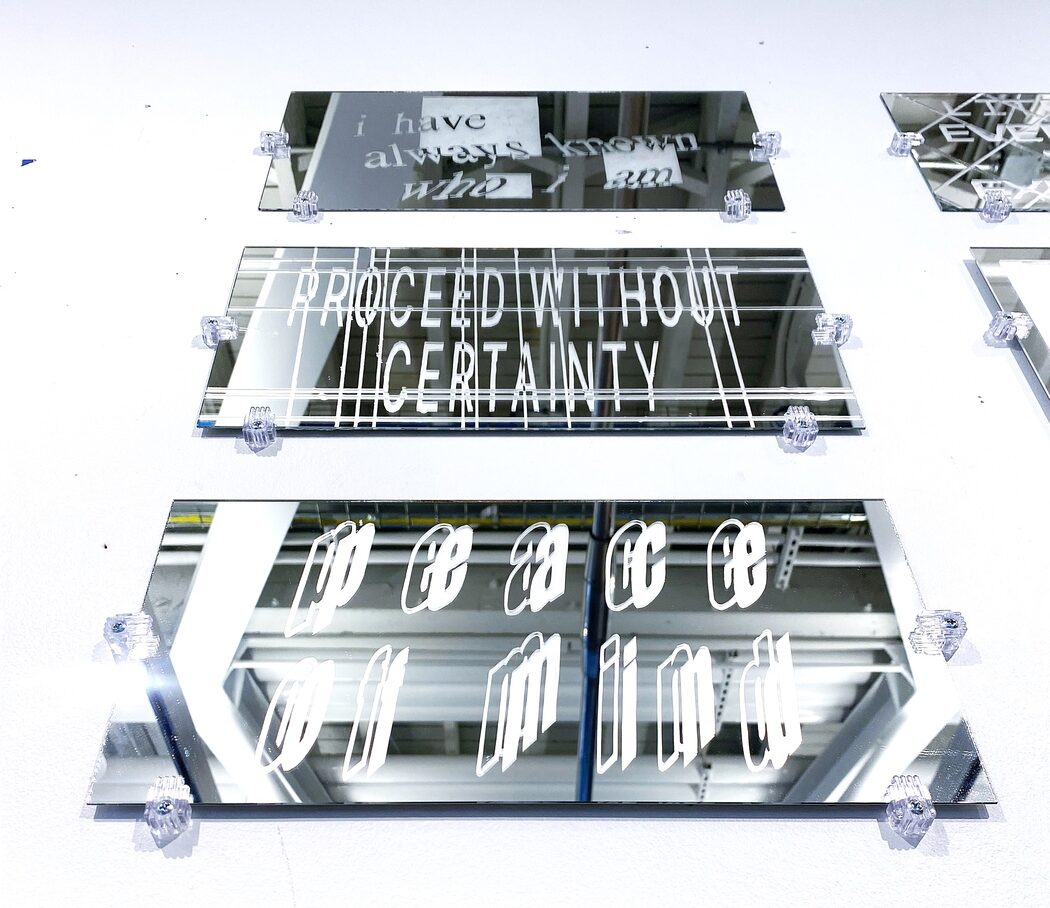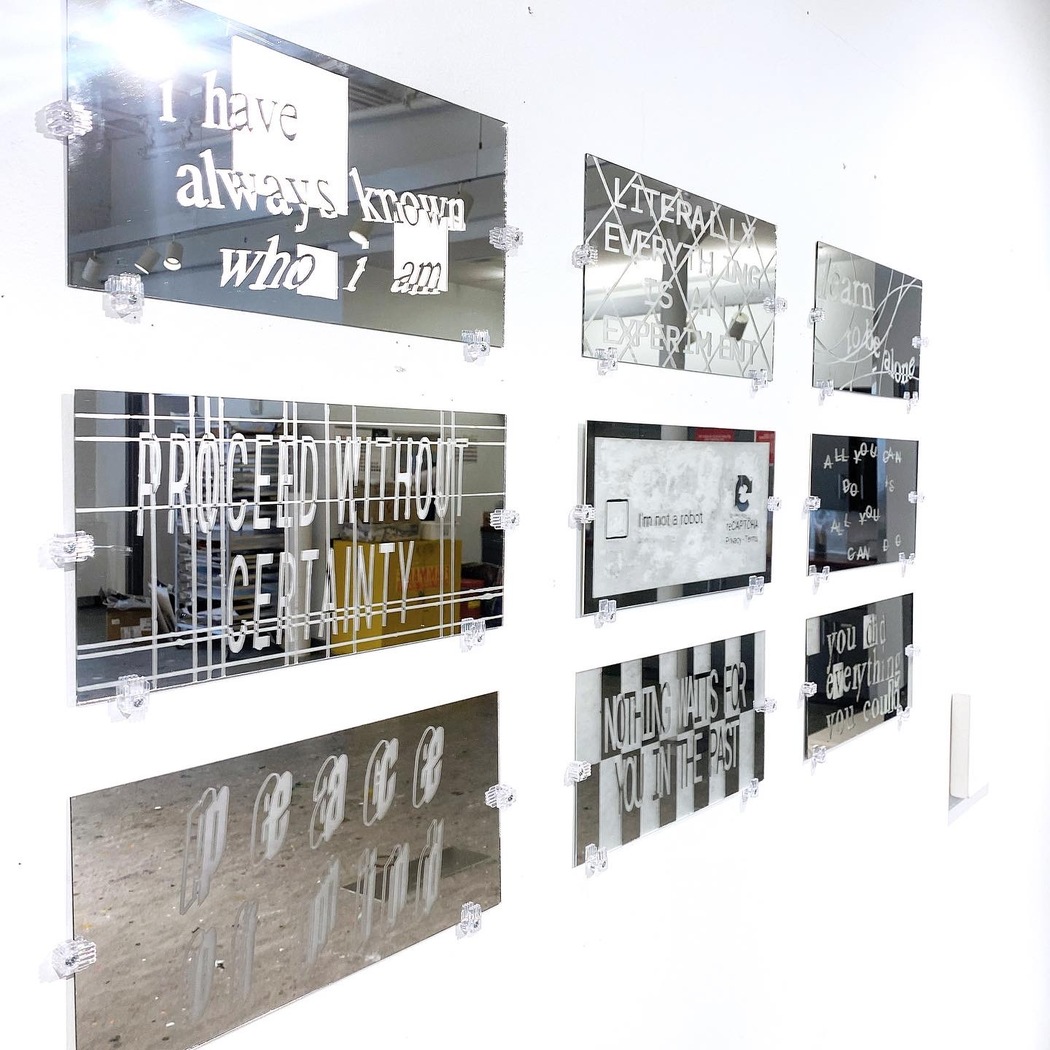Nicky Hiscox
Year of birth: 2002
Where do you live: Niagara, Ontario, Canada
Your education: Bachelor of Arts/Bachelor of Education at Brock University (In Progress)
Describe your art in three words: Postdigital, reflective, contemporary
Your discipline: Focus on digital media, painting, and drawing
Website | Instagram

Can you elaborate on the concept of Captcha and its relationship to the human/non-human distinction in your work?
What inspired you to use mirrors as the surface for your project, and how does this element tie into your exploration of identity?
People are naturally drawn to their reflections for practical or psychological reasons. I chose to use mirrors as the surface for my project because I wanted viewers to be captivated and drawn closer, either by their own reflection or simply by the way the space shifts in the mirror. I also haven’t made much text-based art before this, so I was unsure of my ability to capture the viewer’s attention with text alone. I’m not an expert on the science behind it, but mirrors have connections to psychological and emotional development. I wanted to intervene on these aspects of identity by putting phrases on the mirrors that pull from similar connections.

In your statement, you mentioned themes of existentialism and identity. How do you feel these philosophical ideas manifest in your etchings?
The etchings act as a barrier between yourself and your reflection in the mirror. To focus on yourself in the reflection means first adjusting to the etching that stands in the way. I find that the eye either tries to separate the reflection from the etchings, or combine them into a single image. It feels like a kind of internalizing process; by facing the phrase, you can connect with it and give it meaning. Whether this is a comfortable or uncomfortable process is personal to the viewer, and speaks to their individual experience.
Your work seems to draw from both the digital and the physical realms. How do you balance these two different worlds in your creative process?
My process almost always begins in a digital landscape, using 3D modelling or image-editing software to “sketch” my ideas before bringing them into the physical world. I find it easier to plan my ideas in this way because there are very few limitations in a digital space, and I am still able to consider practical elements such as scale and material. If I can test my technological skills in the digital and then try to translate those skills into the physical realm, it becomes a really intriguing process for me. For this project, I created stencils of my phrases and distorted them in Photoshop to give them each a unique look based on various text-based Captcha techniques. I printed the stencil onto sticker paper, pasted it onto the mirror, and cut away the pieces I wanted etched in the final piece. The etching gel sometimes came off patchy, which wasn’t intentional, but letting the materials do what they want is a part of working with physical or traditional techniques. It’s quite a contrast to the “perfection” that comes with working digitally, and humbling for a perfectionist like me.

The distorted phrases in your work evoke a sense of security and identity. Can you explain how the specific words or phrases you choose impact the viewer’s perception?
The etched phrases speak to a range of feelings or experiences. This was important to me because I wasn’t sure which phrases viewers would connect with the most. I wanted to give the viewer many opportunities to find a connection between themselves and the work. In some cases, the connections might be uncomfortable. Some of the phrases are more personal to me, so I find the connections to be nostalgic or comforting. I wanted a variety so that the piece could offer a bit of “tough love” that you might only get from someone you trust. My drawing instructor pointed me to Jenny Holzer’s Truisms (1978–87), insightful and thought-provoking one-liners that served as inspiration for my project.
Given the rise of AI and its ability to mimic human characteristics, do you think Captcha technology will evolve further, and how might that influence your future work?
There is no doubt that Captcha technology will require improvements to keep up with the capabilities of AI. I think it will be interesting to see how Captcha moves from visual identifications (such as text- or image-based) to more cognitive and behavioural tests. It all feels increasingly ironic, and I think my future work will take this perspective as well. As much as I love technology, it can be hard to watch it become so connected to the human experience, particularly in the case of AI.

Mirrors traditionally symbolize self-reflection. How do you feel your work challenges or reinforces this symbolism through the distorted Captcha text?
The text itself is entirely inspired by self-reflection. Distorting the text could speak to the challenge of understanding the significance of a feeling or experience. It also gives the viewer the challenge of deciphering the Captcha, as if doing so grants them access to greater understanding or the ability to consider how a feeling or experience has impacted them. Of course, this process is not explicitly taking place, but the mirror as a symbol of self-reflection helps to ground the varied meanings of the distorted text. Ultimately, the project is a little self-indulgent as each phrase speaks to me in different ways. “All you can do is all you can do” is what my mother tells me in moments of overwhelm. “Learn to be alone” is a lesson I was faced with after moving away from my hometown during a pandemic. “Literally everything is an experiment” is just something to tell myself when I’m trying something new. Looking through these phrases to see myself in the mirror is a reminder that “I have always known who I am.”

Leave a Reply